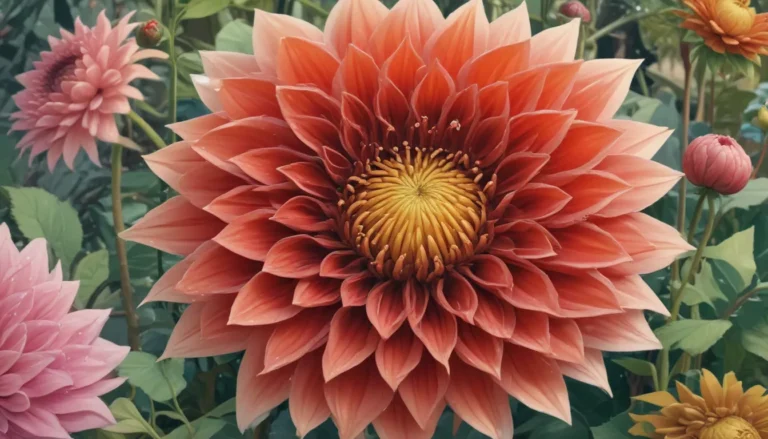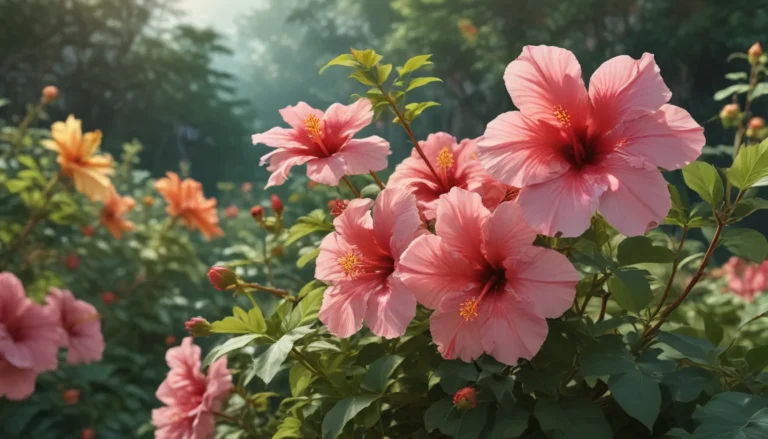Dive Deep into Growing 15 Delectable Mint Varieties at Home

Are you ready to explore the amazing world of mint? Mint is a versatile herb loved for its fresh flavor and invigorating scent, making it a must-have in your garden and kitchen. There are abundant attractive varieties to choose from, each with unique flavors and characteristics that will enhance your culinary adventures.
In the kitchen, mint leaves and flowers offer sweet and cooling flavors that can be used in a variety of dishes and drinks such as cocktails, desserts, salads, sauces, and more. The aromatic, dark green leaves of different Mentha genus species and cultivars attract bees, butterflies, and other pollinators with their terminal spikes of small flowers in various shades.
Mint is easily cultivated and spreads rapidly, forming fragrant clumps when allowed to grow freely. However, some gardeners may find its vigorous spread overwhelming and choose to plant it in containers or confined spaces.
Most mint varieties thrive in similar growing conditions, requiring full to partial sun exposure with moist, humus-rich, and well-draining soil. They are also deer-resistant, thanks to their strong scent that deters herbivores.
If you’re ready to enjoy the delightful flavors of your very own mint patch, let’s delve into 15 exquisite mint varieties for your garden and kitchen. But before we do that, let’s explore the world of mint in more depth.
Mint Varieties That Will Make Your Garden Shine
-
Apple
- Notable for its light green leaves and fruity taste.
- Ideal for flavoring baked goods, salads, and beverages.
- Attracts bees, butterflies, and other pollinators.
-
Chocolate
- Features sweet, chocolatey flavor for diverse dishes.
- Produces purple blooms that pollinators adore.
- Hardy in USDA Zones 5 to 9.
-
Common
- Contains flavors from cross-pollinated hybrid mint varieties.
- Suitable for all culinary uses.
- Usually reliable in Zones 5 to 9.
-
Corsican
- Ground-hugging habit with tiny, fragrant leaves.
- Ideal for pavers and patio planters.
- Aromatic and beautiful with small mauve flowers in summer.
-
Kentucky Colonel
- Very sweet flavor for various culinary uses.
- Pretty and fragrant with pink flowers in summer.
- Hardy in Zones 5 to 9.
-
Lemon
- Zesty lemon fragrance for teas and desserts.
- Draws pollinators with mauve to purple flowers in summer.
- Hardy in Zones 5 to 9.
-
Mitcham
- Enticing flavor for baked goods and teas.
- Dense spires of mauve to purple flowers.
- Hardy in Zones 4 to 9.
-
Mojito
- Mild flavor with citrusy notes for beverages and sauces.
- Fast-growing ground cover or container plant.
- Hardy in Zones 5 to 9.
-
Orange
- Citrusy combination of orange and menthol for various dishes.
- Starter plants available at Burpee.
- Hardy in Zones 5 to 9.
-
Pennyroyal
- Ornamental plant with toxic properties if ingested.
- Ideal as a ground cover or in planters.
- Hardy in Zones 6 to 9.
-
Peppermint
- Popular variety with dark green foliage for sweet flavor.
- Cultivate in containers to manage spread.
- Hardy in Zones 3 to 11.
-
Pineapple
- Pineapple mint with tropical fragrance for cocktails and desserts.
- Suitable for beds or containers.
- Hardy in Zones 5 to 9.
-
Spearmint
- Bright, refreshing flavor for beverages and salads.
- Easily cultivated in containers.
- Hardy in Zones 3 to 11.
-
Watermint
- Water lover variety for baked goods and teas.
- Excellent for wet locations like bogs and water gardens.
- Hardy in Zones 5 to 11.
-
Wild
- Highly aromatic native variety for culinary and medicinal uses.
- Ideal for wet environments like creek banks and ponds.
Coolly Refreshing Mint
Mint is a versatile herb that adds a refreshing touch to both your garden and kitchen. Enjoy mint leaves in various culinary creations and explore new ways to incorporate their vibrant flavors into your dishes.
Visit our sister site, Foodal, for a collection of mint-infused recipes that will tantalize your taste buds. From summer drinks to garden-fresh salads, mint adds a zesty twist to your culinary creations.
In the garden, mint can be a fragrant ground cover, a potted herb, or a decorative ornamental plant that attracts pollinators. While mint can be aggressive in its growth, growing it in containers allows you to enjoy its benefits without worrying about its spread.
With a plethora of mint species and cultivars to choose from, you can cultivate a diverse array of fragrant and flavorful mint varieties in your garden. Experiment with different types of mint to discover your favorites and elevate your culinary experiences.
How do you use mint in your garden or kitchen? Share your minty adventures in the comments below!
For more tips on caring for and cultivating mint, check out our comprehensive guides on growing mint indoors and from seed. Happy gardening and happy cooking with your delicious mint varieties!





